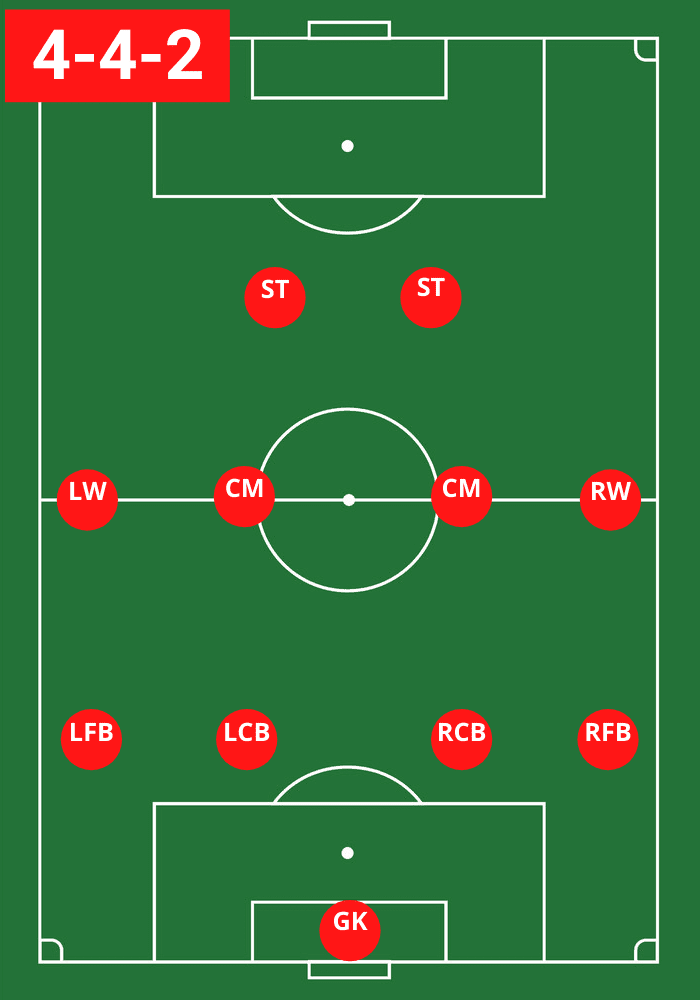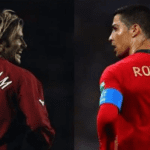Soccer Formations 11v11 and 9v9
- Author - Andy Long
- Last Updated -
What Are Soccer Formations?
Hey there, soccer enthusiasts! Ever wondered how your favorite team decides who stands where on the field? Well, that’s all down to soccer formations. These are the game plans that coaches use to organize their players, giving each one a specific role and responsibility.
You’ve probably heard of formations like the 4-4-2, 4-3-3, or 3-5-2. These aren’t just random numbers, they represent the number of defenders, midfielders, and forwards on the field. The choice of formation can depend on a lot of things – the strengths of the team, the style of the opponents, or even the state of the game.
But here’s the secret sauce: a great formation is all about balance. It’s not just about scoring goals or preventing them, it’s about doing both effectively. A well-chosen formation can help players work together seamlessly, creating chances to score while keeping their own goal safe.
So, whether you’re a coach looking to tweak your team’s strategy, or a player wanting to understand the game better, this article on “Soccer Formations” is just what you need. We’re even going to delve into the nitty-gritty of 11v11 and 9v9 formations. Ready to up your soccer game? Let’s kick off!
The 4-4-2 Soccer Formation
Soccer formations are an essential part of the sport, constantly evolving and being adapted by teams all over the world. One of the most well-known and widely used formations is the 4-4-2. This formation is favored by teams such as Real Madrid, Manchester United, and even local high school teams and clubs.
The 4-4-2 is a balanced formation,
providing security for both the defense and offense. It features four defenders, four midfielders who can shift between defense and attack as needed, and two forwards who are responsible for scoring goals and setting up plays for their teammates. This formation allows for a strong defense while also maintaining the ability to push forward and attack.
The 4-4-2 formation is a very traditional and well-balanced formation
that has been used by many successful teams. It is often referred to as a “flat” formation, as it features four defenders and four midfielders who play in a straight line across the pitch.
In this formation, there are typically two central defenders who are responsible for protecting the goal and two fullbacks who provide width and support the attack.
The midfield is made up of two central midfielders and two wide midfielders, with the central midfielders responsible for helping to defend and the wide midfielders tasked with providing width and supporting the attack. Up front, there are two forwards who are responsible for scoring goals and creating chances for their teammates.
One of the main strengths of the 4-4-2 formation is its balance.
It provides a strong defense while also maintaining a strong presence in attack. It can be particularly effective against teams that rely on wing play, as the wide midfielders can track back and defend while the fullbacks provide additional support. However, it can be vulnerable to teams that play with a lone striker or a more attacking formation, as there may be less cover in defense.
The 4-3-3 Soccer Formation
The 4-3-3 formation is a popular choice for teams looking to adopt a more modern style of play. It is highly flexible and allows coaches to choose which player to use as a “point” in front of the back four. This versatility has made it a popular choice for teams looking to transition from their traditional formations.
The 4-3-3 consists of four defenders,
three midfielders, and three forwards. It gives coaches the ability to adjust their team’s style of play based on the opponent and other factors. This formation is known for its balance and can be effective both offensively and defensively.
It allows for a strong defense while also maintaining a strong presence in attack. However, it may be vulnerable to teams that play with a lone striker or a more attacking formation, as there may be less cover in defense.
The 4-3-3 formation is a balanced formation that is commonly used in modern soccer.
It is made up of four defenders, three midfielders, and three forwards.
In this formation, there are typically four defenders, consisting of two central defenders and two fullbacks. The central defenders are responsible for protecting the goal, while the fullbacks provide width and support the attack. The midfield is made up of three players, with one central midfielder and two wide midfielders.
The central midfielder is responsible for helping to defend and control the midfield, while the wide midfielders provide width and support the attack. Up front, there are three forwards who are responsible for scoring goals and creating chances for their teammates.
One of the main strengths of the 4-3-3 formation is its flexibility.
It allows coaches to choose which player to use as a “point” in front of the back four, which can help to tailor the formation to the team’s strengths and the opponent’s weaknesses. It also allows for a strong defense and a potent attack, making it a well-rounded formation. However, it can be vulnerable to teams that play with a lone striker or a more attacking formation, as there may be less cover in defense.
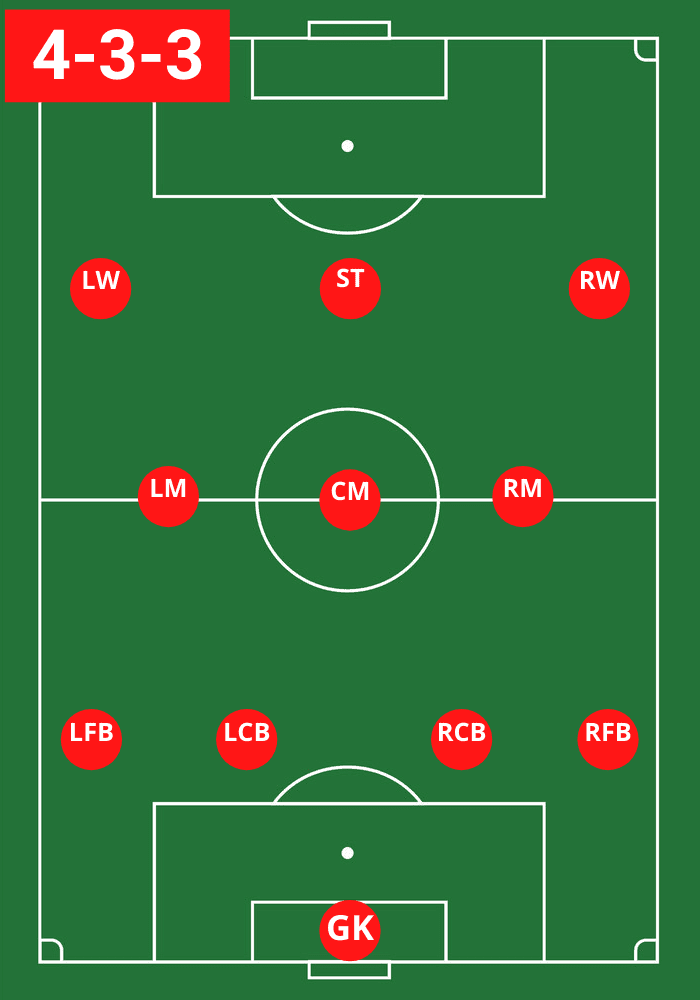
The 4-3-2-1 Soccer formation
The 4-3-2-1 formation is a popular and effective soccer formation that can be used to dominate the opponent. It features four players in the front two rows, with one center forward, one left winger, and one right winger.
This leaves three players on each back row: the two fullbacks and a defensive midfielder who protects them by cutting off passing lanes between their opponents’ midfielders. This formation has been utilized by notable managers such as Pep Guardiola, Carlo Ancelotti, and Arsène Wenger.
In this formation, the center forward is responsible for scoring goals and creating chances for their teammates. The wingers provide width and support the attack, while the fullbacks offer defensive support and contribute to the attack when possible. The defensive midfielder acts as a shield for the defense, helping to protect the back four and disrupting the opposition’s attacks.
One of the main strengths of the 4-3-2-1 formation is its attacking potential.
With three forwards and two attacking midfielders, it can be very effective in creating chances and scoring goals. However, it can be vulnerable to counter-attacks, as there may be less cover in defense if the team is caught out of position.
It is important for the defensive midfielder and the fullbacks to be disciplined and stay back to protect the defense when needed.
The 4-3-2-1 formation is a soccer formation that is designed to provide a strong attacking presence while also maintaining a solid defense.
It is made up of four players in the front two rows and three players in each back row.
In the front row, there is a center forward who is responsible for scoring goals and creating chances for their teammates. There are also two wingers, one on the left and one on the right, who provide width and support the attack. In the second row, there are three midfielders: a defensive midfielder who acts as a shield for the defense and disrupts the opposition’s attacks, and two attacking midfielders who support the attack and look to create goalscoring opportunities.
In the back row, there are three defenders:
two fullbacks who provide defensive support and contribute to the attack when possible, and a central defender who is responsible for protecting the goal. The defensive midfielder and the fullbacks must be disciplined and stay back to protect the defense when needed, as the formation can be vulnerable to counter-attacks if the team is caught out of position.
One of the main strengths of the 4-3-2-1 formation is its attacking potential. With three forwards and two attacking midfielders, it can be very effective in creating chances and scoring goals. However, it is important for the team to maintain a strong defense and be aware of the counter-attack threat.
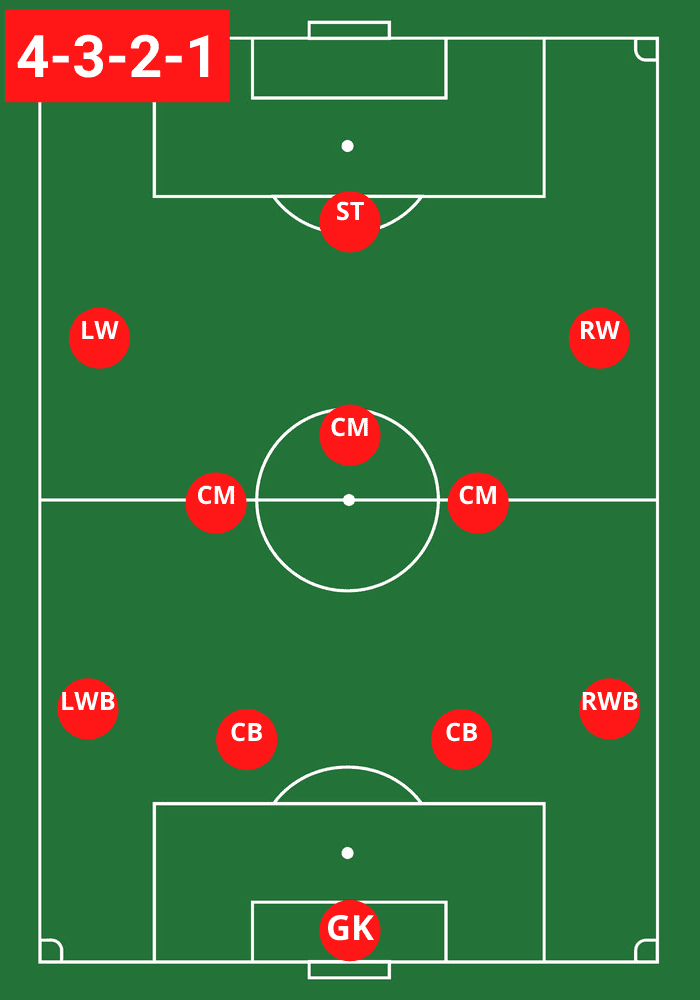
The 4-5-1 Soccer Formation
The 4-5-1 formation is similar to the 4-3-3 on paper, but it involves different tactics. It is seen as an offensive strategy as it puts pressure on defenders and creates space for attackers to make plays.
In the 4-5-1 system, there are four defenders who stay back to protect against counterattacks. The midfielders can help out by pressing forward when they have opportunities and spreading out across the field to ensure the team is not outnumbered in the attacking third of the pitch.
This formation is best used with two forwards up front who can score goals or assist their teammates while also being able to defend opposing players if needed.
The midfielders in this formation must be able to contribute both offensively and defensively, as they play a crucial role in both aspects of the game. The formation allows for a strong attack while also maintaining a solid defense, making it a well-rounded and effective strategy.
The 4-5-1 formation is a soccer formation that is designed to provide a strong attacking presence while also maintaining a solid defense.
It is made up of four defenders, five midfielders, and one forward.
In this formation, the four defenders are responsible for protecting the goal and stopping counterattacks from the opposition. The five midfielders play a key role in both defense and attack, with some tasked with helping to defend and others focusing on creating scoring opportunities. The forward, also known as the “striker,” is responsible for scoring goals and creating chances for their teammates.
One of the main strengths of the 4-5-1 formation is its versatility. It allows for a strong attack while also maintaining a solid defense. The midfielders must be able to contribute both offensively and defensively, as they play a crucial role in both aspects of the game. The formation can be effective against teams that rely on wing play, as the midfielders can provide cover and support for the fullbacks.
However, it can be vulnerable to teams that play with a lone striker or a more attacking formation, as there may be less cover in defense.

The 3-5-2 Soccer Formation
The 3-5-2 is a soccer formation that consists of three defenders, five midfielders, and two forwards. It has been used by many teams over the years, with some of the most successful teams being Italian clubs Juventus and A.C. Milan in their golden era. The formation is sometimes referred to as “the Christmas Tree” due to its shape when drawn on paper.
While the 3-5-2 is primarily a defensive formation, it can be difficult to play offensively with this system. However, with careful planning and execution, it can be an effective tactic. In this formation, the three defenders are responsible for protecting the goal and stopping counterattacks from the opposition. The five midfielders play a key role in both defense and attack, with some tasked with helping to defend and others focusing on creating scoring opportunities. The two forwards, also known as “strikers,” are responsible for scoring goals and creating chances for their teammates.
One of the main strengths of the 3-5-2 formation is its solid defense. With three central defenders, it can be difficult for the opposition to penetrate and create scoring chances. However, it can be vulnerable to teams that play with a lone striker or a more attacking formation, as there may be less cover in defense. It is important for the midfielders and forwards to contribute to the defense and help protect the back three.
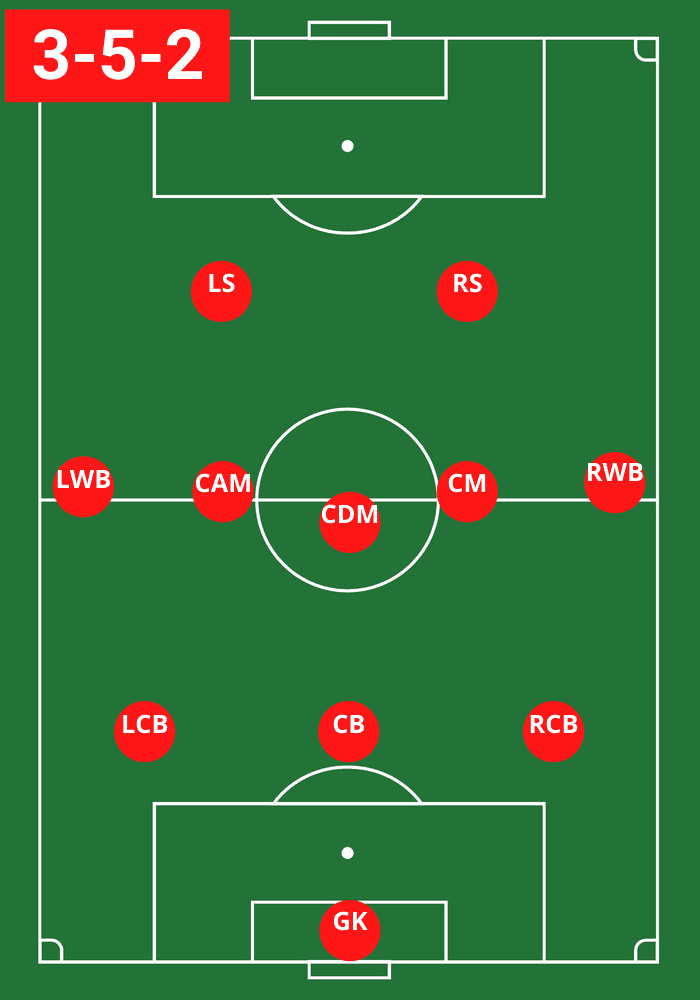
9v9 Soccer Formations
9V9 formations are typically used for youth soccer on smaller fields. With fewer players on the field, it gives coaches an opportunity to have more freedom with their team’s positioning. Players are given less instruction on where and how to play their position. However, in more competitive league situations the player requirements can become more involved, as you will see in the 3-1-3-1 formation below.
As a parent of a young soccer player, you may have noticed that the games your child plays are much different than what they see on TV or with older players in 11v11.
9v9 means that teams are reduced to nine players each on the field at one time. The 9 v 9 game is primarily played in low-age leagues, youth U10 to U13.
This type of soccer formation can be confusing for new players and parents. The following information should give you some guidance. We will take a look at some variations on 9V9 soccer formations.
In general, the field lines for youth soccer are the same as 11v11… they are split into 3 main groups: Defenders, Midfielders, and Forwards or Strikers.
The Classic (3-3-2)
The 3-3-2 formation is a basic formation to coach young players. It is a solid formation to defend and attack.
It’s the simplest formation for 9v9 and It’s easy to understand… Easy for wide players and has quick recovery when the ball is lost.
This formation is not a strong attacking formation and needs a strong midfield for attacking success. It also relies on midfield support from left and right center backs moving the ball forward.
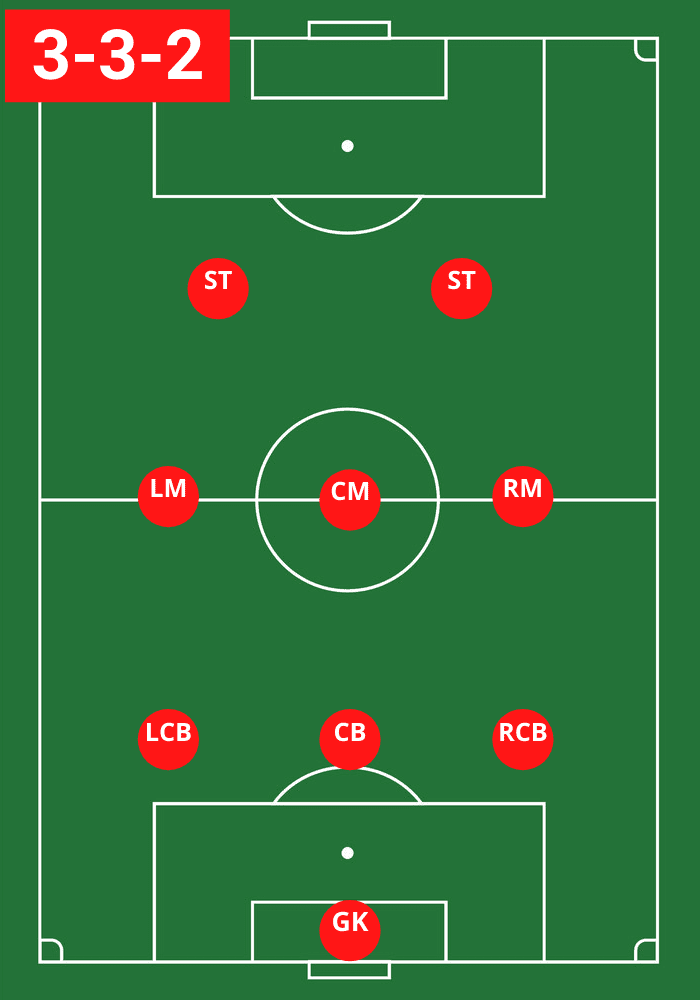
The Lone Front-Man
(4-3-1)
The 4-3-1 is a very popular formation used at the U11/U12 age level. It provides a solid defensive base and plenty of natural passing triangles and diamonds occur within the formation.
It also creates an easy transition to the 4-3-3 formation when teams move up to 11v11.
In this formation, It’s common for coaches to have their strongest players in the middle of the field – LCB, RCB, CM, and ST.
In the midfield to help with the attack – the right midfield and left midfielders will play as “attacking midfielders” and the center midfielder will play as a “defensive midfielder”.
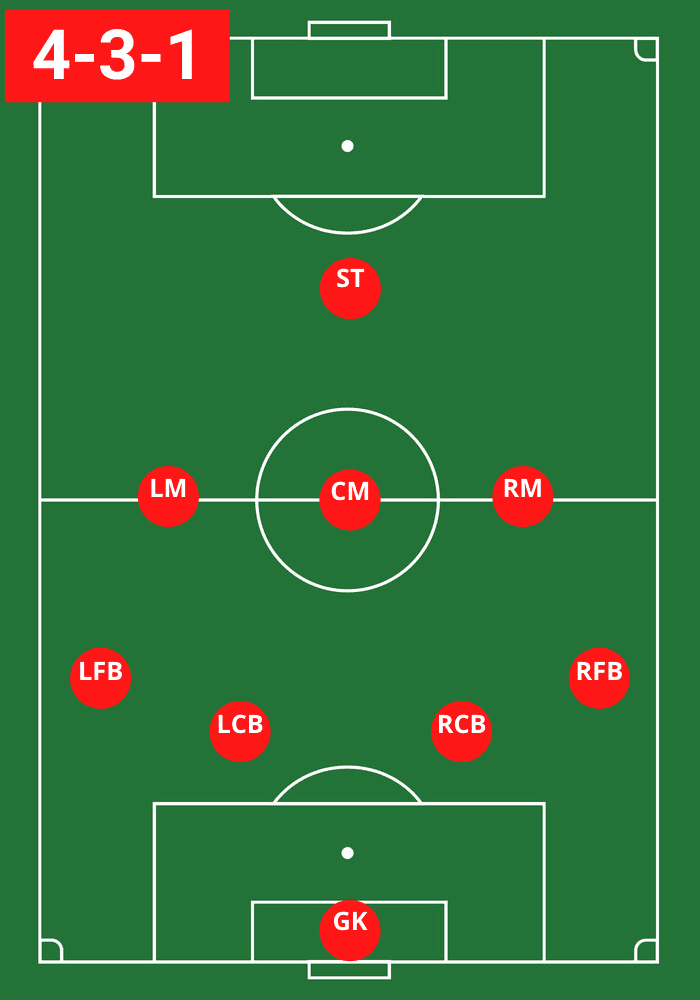
The Lone Front-Man W/ Defensive Midfielder (3-1-3-1)
Based around a fairly new formation in 11v11.
the 4-1-4-1. The 9v9 3-1-3-1 formation provides loads of attacking potential for teams with skilled players on the ball.
It’s necessary in this formation to have left and right defenders who are good ball players and not afraid to take space up the field.
Wingers or right and left attacking mids who stay high and wide. They also have to fall back on defense as well.
The most important position is the center defensive mid (CDM). This player has to be a ball-winner and have the skills to dictate control of the game through their distribution on the field.
You will usually see some form of this formation with more technically advanced teams.
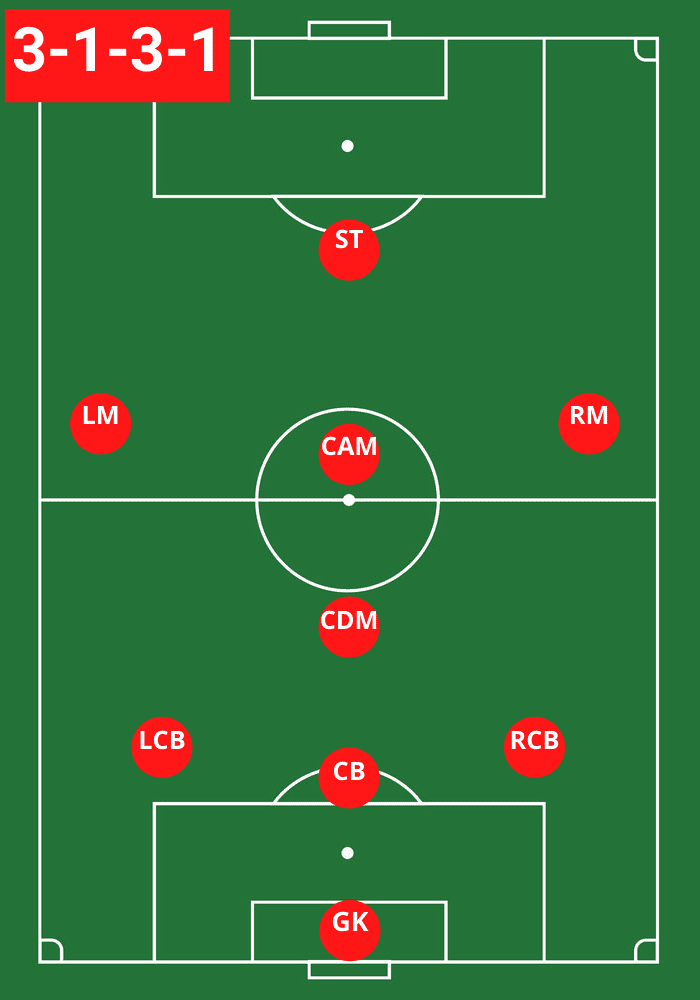
In conclusion,
soccer formations are an essential aspect of the game, providing coaches with a tactical system to organize players on the field.
The most common formations include the 4-4-2, 4-3-3, and 3-5-2, with each formation designed to balance defense and attack while minimizing the risk of conceding goals. The 4-4-2 formation is a balanced formation with a strong defense and a potent attack, making it a traditional and popular choice among coaches.
The 4-3-3 formation is known for its flexibility and can be tailored to a team’s strengths and an opponent’s weaknesses. Finally, the 4-3-2-1 formation is effective in dominating the opponent and has been utilized by notable managers.
Overall, understanding soccer formations is crucial for both coaches and players to succeed in the sport.
Mastering Soccer Jargon: A Glossary for Fans and Players
Last Updated on April 12, 2024 by Andy Long Mastering Soccer Jargon:...
Read MoreBest Soccer Cleats For Goalkeepers: Top 5 Picks for 2024
Diving right into the heart of the matter, let's explore a question...
Read MoreThe Transformation of German Soccer in the 2000s
Kickoff: A Brief Overview of German Soccer in the 2000s The Dawn...
Read MoreBest Soccer Cleats for Women In 2024: Top 5 Picks
The Best Soccer Cleats for Women in 2023: Top 5 Picks The...
Read MoreThe Historical Dominance of Brazilian Soccer in the World Cup
Introduction: The Beautiful Game's Grandest Stage The World Cup, a grand tournament...
Read More5 Best Soccer Cleats For Strikers in 2024
What are the Best Soccer Cleats for Strikers? The beautiful game of...
Read MoreAn Introduction and History of UEFA Champions League
In terms of prestige, nothing surpasses lifting ‘the cup with big ears’,...
Read MoreThe Golden Era of Italian Soccer in the 1990s
A Glimpse into Italy of the 90s: Culture, Politics, and Soccer As...
Read MoreWhat is a goal kick in soccer? Soccer Law #16
Soccer is governed by a set of rules known as the Laws...
Read MoreConcussion Substitutions in Soccer: evolving concussion protocols
The Growing Concern for Player Safety in Soccer Soccer, a beloved sport...
Read MoreThe Impact of VAR on Modern Soccer: Video Assistant Referee
Traditional Refereeing Methods: Balancing Act on the Pitch In the realm of...
Read MoreThe Changing Role of Inverted Wingers
Definition of 'Inverted Wingers' in soccer An inverted winger, also known as...
Read MoreBest Athletic Insoles Made – VKTRY Performance Insoles
Try VKTRY Insoles to Improve Your Athletic Performance Now, let's delve into...
Read MoreThe Changing Role of Wingers in Soccer
The Changing Role of Wingers in Soccer. Soccer has captivated millions around...
Read MoreThe Transformation of Midfielders Roles in Soccer
The Transformation of Midfield Roles in Soccer The Evolution of Soccer Tactics...
Read MoreVersatile Soccer Players: Chameleons of the Pitch
Ah, the beautiful game of soccer! A sport that has captivated millions...
Read MoreThe Changing Role of Strikers in Soccer
The Changing Role of Strikers in Modern Soccer Soccer, known as the...
Read More5 Best Soccer Cleats For Speed In 2024
Our Top 5 Picks for the Best Soccer Cleats for Speed in...
Read MoreBest Soccer Ball For Games in 2024: Top 5 Picks
The Importance of Having a Good Soccer Ball for Training Soccer requires...
Read Moresoccer start and restart of play
Brief Overview: Soccer as a Popular Sport Worldwide Soccer's popularity stems from...
Read MoreSoccer Referee Roles and Responsibilities
The Crucial Role of a Soccer Referee In the vast realm of...
Read MoreDiscover the 5 different types of soccer cleats
Introduction - A brief overview of the importance of choosing the right...
Read MoreSoccer Throw In Rules – Soccer Law #15
Law Number 15 - Throw Ins A throw-in in soccer is granted...
Read MoreSoccer 6-Yard Box: The Penalty Area
What is the 6-Yard Box in Soccer? The 6-Yard Box is an...
Read MoreBest Soccer Ball for Training: Top 5 Picks
The Importance of Having a Good Soccer Ball for Training Soccer requires...
Read MoreSoccer Goal Size and Dimensions
Brief History of Soccer Soccer has been played in various forms throughout...
Read MoreDo Grip Socks Help In Soccer?
Do Grip Socks Help In Soccer? The Importance of Footwear in Soccer...
Read MoreCan Indoor Soccer Shoes Be Used on Turf?
Introduction: Demystifying a Controversial Issue Soccer is a sport that requires specific...
Read MoreBest Soccer Cleats For Midfielders in 2024 – Top 5 Picks
The Best Soccer Cleats For Midfielders in 2023 - Our Top 5...
Read MoreSoccer Positions For Slower Players
Soccer is a unique sport that requires a combination of physical strength...
Read MoreHow to Clean Soccer Cleats Like a Pro
The Importance of Cleaning Soccer Cleats Playing soccer is a great way...
Read MoreNutmeg in Soccer, Soccer’s Sneakiest Move
Soccer is an incredible sport with numerous skills and techniques that make...
Read MoreWhat is a Set Piece in Soccer?
What is a set piece in soccer? Introduction Soccer is a sport...
Read MoreBest Laceless Soccer Cleats: Top 5 Picks
What Are The Best Laceless Soccer Cleats? Soccer players know the importance...
Read MoreWhat is a soccer tackle?
The Importance Of Mastering Tackling Skills For Success In Soccer To succeed...
Read MoreHow To Break In Soccer Cleats
How to break in soccer cleats The Importance of Breaking in Soccer...
Read More
